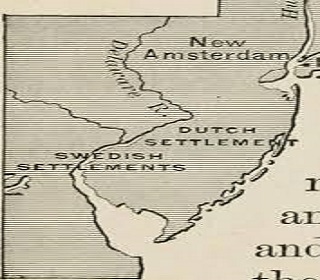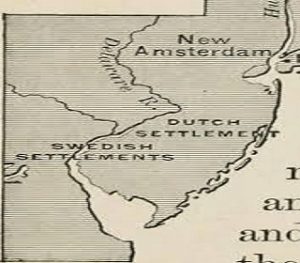



William Stuart, in his important report on White Servitude, informed us that the Dutch West India Company, when decided to colonize the new territories of New York and New Jersey, did so for purely commercial reasons. The Dutch West India Company wanted to invest in countries with strong agricultural potential, but the key problem was the allocation of workers so as to ensure the maximum level of production of annual crops.
After a careful analysis of several of these territories, the West India Company came to the conclusion that an adequate strategy for the colonization of these regions was not only necessary but also the harbinger of new income-earning opportunities. But the number of workers who could be used was very limited, because anyone who had the economic means was reluctant to face excessive labor, deprivations and disease in large and hostile territories.
At first, the workforce plan of the West India Company started with a schedule based on masters and servants system. This form of contract looked too much to the serfdom system production widespread in Early Medieval Europe (400-1100) that was not particularly pleasing to Dutch settlers, in whose country there remained only the memory of serfdom. The West India Company granted huge tracts of land to the masters, with the proviso that, within the first four years, they managed to settle at least fifty individuals in their lands, who should remain at work for at least ten or fifteen years.
The masters, for their part, had to subsidize their peasants with houses, barns, cattle, horses and all necessary equipment. The masters received back the rent of one half of the products of lands so cultivated. For their part, workers were forced to remain on the lands for a period of at least ten years and, in addition, they were obliged to grind their grain in the masters’ mill, sell their agricultural products in the local market owned by their masters, and, finally, they could hunt and fish only by their permission. As we said above, Dutch farmers did not like at all this revival of serfdom, whereby the West India Company, circa 1638, quickly went back on its decision, both increasing the agricultural land base to the masters and offering a new, much less onerous long-term contract to the settlers.
When the British took possession of these lands, they retained the serfdom system production. The workforce problem however remained unresolved, especially in New Jersey, where workers were building forts, homes, barns, mills and roads. In the second half of the 17th century, the West India Company managed to find a decent amount of settlers, some of whom came from Holland, others from England, and some still others from the Palatinate, Germany. Those who came from Holland to work on farms were prisoners and poor people with some rare exception. But white slaves were essentially poor people.
In 1654, the Burgomaster of Amsterdam found a rather ingenious solution in order to satisfy the demand for servants by the West India Company, and he notified the Director-General Peter Stuyvesant, Burgomaster of New Amsterdam, in writing that hospices in his town were exceedingly overcrowded and that, in order to alleviate the financial difficulties of the hospices, he had decided to send some guests to work in New Netherland. Thirty boys and girls were therefore transported by boat, so that, according to their fitness for the job, they could procure their sustenance thanks to their work.
According to William Stuart, many children of poorhouses at Amsterdam were sent to New Netherland In 1658, with contracts ranging from two to four years, depending on the age of them, who were also forced to serve according to their appointed time. Meanwhile, some common prisoners of war came from England. In 1693 other prisoners arrived both in New York and New Jersey, and, according to the report of the Governor of New York, we are aware of the fact that many children were also sent from the Palatinate as apprentices between1710 and 1714, with ages ranging from three to fifteen years, although most of them were between twelve and fourteen, and about 40% of them were orphans.
The reality of these unfortunate children was carried on the basis of absolute obedience. Usually the parents of these children and teenagers had also transferred their parental rights to the masters, so they, for the whole time of their service, depended almost entirely on their masters, and they were subject to various forms of corporal punishment, while food and rest were granted by masters themselves at their sole discretion. Both in New York and New Jersey, if someone was trying to escape, the penalties passed by a fine ranging from ten to twenty-five pounds to the internment in correction houses. But they could be subject to no more than thirty-nine lashes. Any adult could also be subjected to the punishment of the pillory, even in winter.
I conclude by noting that, since the white slaves were difficult to find and created complex problems, the masters finally opted for black slaves. The extremely detailed and informed report of William Stuart is actually a very important document on the early years of colonization in America that also throws light on the exploitation of children. William Stuart stated that this phenomenon was not peculiar to New York and New Jersey, but it was relatively spread in Europe, and especially in Sicily, with the phenomenon of the so-called Carusi, viz. children working in sulfur mines in Sicily.
According to William Stuart, the issue of White Servitude can be fitted into the broader context of labor problem in the world, and he called for help the League of Nations to adjust the problems of work at the international level. So that, in his opinion, White Servitude in the colonies of New York and New Jersey was only a short chapter of work in world environmental history.
It’s a pity that William Stuart had been over-optimistic.
Source
William Stuart, “White Servitude in New York and New Jersey”, in Americana, New York, 1921, Vol. XV, pp. 19-37.
What is the Main Cause of a Heart Attack? What is its Solution? A heart attack is the blockage of… Read More
In the vast economic arena, one term that often takes center stage, inciting extensive debates and discussions, is the "debt… Read More
De-Dollarization: The Changing Face of Global Finance The financial landscape is in a state of flux, with an intriguing economic… Read More
The curtains closed on a dramatic Bundesliga season with Bayern Munich standing tall once again, clinching their 11th straight title.… Read More
The Unfolding Story of Celine Dion's Health In recent news that has left fans across the globe stunned, iconic singer… Read More
As the echoes of the recent NBA season start to fade, the attention of enthusiasts is firmly glued to one… Read More